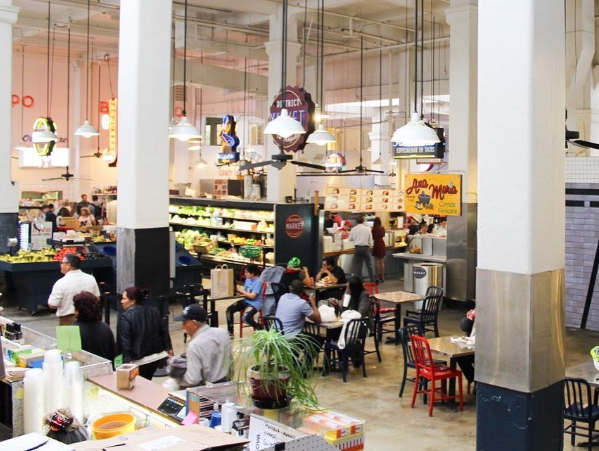LOS ANGELES—We live in an age where new culinary trends seem to develop every week. In the past few years, we’ve encountered the popularity of coconut water, coconut oil, avocado toast, acai bowls, ramen burgers, cronuts, purple vegetables, unicorn-themed beverages, and cereal-infused desserts—just to name a few.
Having lived in or near Los Angeles my entire life, I’ve witnessed my fair share of food trends, which tend to burst onto the scene, linger for a few months, and fade away by the following year. This isn’t necessarily bad, as it gives me incentive to try unfamiliar foods or visit unusual restaurants before it’s too late.
Last year, I visited the century-old Grand Central Market in downtown for the first time. I explored the entire area, squeezing through lines of people waiting for their food and trying to decide what I wanted for myself. Tacos were being sold right across from chow mein. A juicery sat adjacent to a breakfast sandwich stand. Visitors could grab ice cream cones for dessert after slurping down bowls of Japanese ramen. As expected, the Market was overflowing, and securing seats took an hour. But the whole arrangement was convenient and unique, and it was clear why so many people flocked there.
The food hall concept is nothing new, with establishments already common in several countries, including Oscar Farinetti’s Eataly, a prominent marketplace with locations in Italy, Japan, and New York. In recent years, food halls have become more appealing to restaurateurs, chefs, and consumers alike, with a range of restaurants and bars available under one roof. Foodies are bound to find new items to try with every visit. Chefs and entrepreneurs have room to experiment without fearing financial loss.
“This food-hall movement is something that just will pick up steam,” said culinary expert Damian Mogavero in an interview with MarketWatch. “Every secondary city will have one and every major urban center will have a few. Think of food courts and think of this as the next Macy’s or Bloomingdale’s. Instead of Macy’s or Bloomingdale’s anchoring real-estate projects, it’s going to be food that is the future anchor, because that is the way we want to eat.”
Los Angeles is now catching on to the trend, with some food halls already established and a few more in development. The Original Farmers Market in the Fairfax area has been a popular destination since 1984, with a variety of vendors and food stalls. Brooklyn-based Smorgasburg LA in downtown has been drawing crowds since 2016, with dozens of food and merchandise vendors.
Over the next year, a handful of new food halls will open in various Los Angeles locations. Rivaling the Grand Central Market will be the Corporation Food Hall on the heavily populated Spring Street, predicted to open in July. There will be seven food stalls, a bar, and an espresso stand, with communal seating and a patio. Each stall will be equipped with a full kitchen, allowing chefs more freedom.
Chinatown, with its steadily growing culinary scene, will be home to The Apiary, a multi-unit property co-owned by restaurateur Leonard Chan. The timetable for the opening of the 8,500-square-foot space is unavailable, but the project is considered one of the most anticipated developments in the area, according to Eater Los Angeles.
The ever-changing Koreatown is also preparing for its own food hall, called FOOD at 3500 Wilshire, across the street from the Line Hotel. The existing two-story building will be filled with eight stalls with new vendors, and the “Food Court” sign on the exterior will be removed during renovations.
The aviation-themed Proud Bird restaurant next to LAX has been undergoing work to be turned into a food hall, predicted to open in June. The 50,000-square-foot complex will feature globally-inspired food, lounge areas, private event rooms, and glass walls.
Beverly Grove, too, will join in on the trend, with a 50,000-square-foot food hall named Edin Park set to open later this year. There will be nearly three dozen vendors and a 1,500-square-foot communal dining area. According to Eater Los Angeles, visitors will be able to order meals from various vendors while sitting at their tables, likely through tablets.
With the convenience of these new food halls, and dozens of top vendors and chefs under a single roof, perhaps keeping up with culinary trends won’t be so difficult after all.






